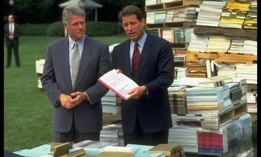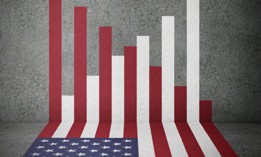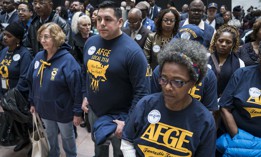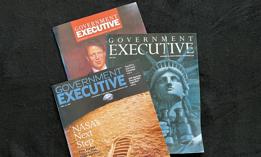Congress can prevent this: It ought to pass a law stipulating that directors of the centers and research institutes that are part of the National Institutes of Health—officials like Fauci—should be removable only for malfeasance, neglect of office, or incapacity, but not for mere policy differences or politically inconvenient messaging. Similar protections exist for the heads of numerous independent agencies, such as the Federal Trade Commission and Social Security Administration. These protections prevent presidential politics from excessively influencing an administrator’s performance.
As it happens, the Supreme Court is supposed to decide a case this term that could make it more difficult for Congress to limit when the president may discharge executive-branch officials to cases of “good cause.” At least since the Reagan administration, opponents of independent agencies have insisted that such restrictions impinge on the executive power vested in the president by Article II of the Constitution. The current dispute focuses on the director of the Consumer Finance Protection Bureau.
Advocates of what’s known as “unitary-executive theory” insist that presidents have constitutionally guaranteed authority to fire all executive officers at will and to command them in how they make policy. Heretofore, the Supreme Court has consistently rejected that argument. The majority of our executive-indulgent Court, however, now likely subscribes to that theory, no matter how grounded in myth it may be. The question is to what degree that majority will consider itself bound by precedent not to destabilize the long list of agencies, including the Federal Reserve System, whose directors are insulated from at-will dismissal.
One of the earliest modern examples of unitary-executive theory in practice involves the Centers for Disease Control and Prevention. The Reagan administration objected to a statute requiring the CDC director to prepare and disseminate an informational pamphlet on AIDS without clearance by any other office, including the White House. In a 1988 Office of Legal Counsel opinion , the Justice Department insisted that it would be unconstitutional to exclude the president from reviewing and possibly editing an expert pamphlet on AIDS: “The Director of the CDC, as a subordinate executive branch officer within the Department of Health and Human Services, is subject to the complete supervision of the President with respect to the carrying out of executive functions.” In asserting the president’s entitlement to edit CDC pamphlets, OLC said, “It matters not at all that the information in the AIDS fliers may be highly scientific in nature.” In other words, the delegation of authority to the CDC to inform the public on health issues is effectively, in OLC’s view, a delegation of power to the president.
Trump’s penchant for demagoguery shows just how dangerous this innocuous-sounding theory can be. Trump is obsessed with “branding” the federal coronavirus response as his own. Consider that in 2009 and 2010, the CDC issued a variety of guidance regarding the H1N1 (swine flu) pandemic, all of which remains visible on the agency’s website as guidance from the CDC. No formal guidance emanated personally from President Barack Obama. Yet on March 16, 2020, the White House announced “new guidelines” from President Trump and the White House Coronavirus Task Force “to help protect Americans during the global Coronavirus outbreak.” The guidelines appear only on the White House website and are headlined “The President’s Coronavirus Guidelines for America.” The White House logo accompanies that of the CDC.
Trump wants people to think the federal response is going well—and going well because he is in charge. His confidence, however, is often nothing but wishful thinking. Speaking on March 19 of chloroquine and the anti-Ebola drug Remdesivir, Trump offered this word salad : “It’s going to be very exciting. I think it could be a game changer and maybe not. And maybe not. But I think it could be, based on what I see, it could be a game changer. Very powerful. They’re very powerful.”
The following day, when Fauci made clear his reluctance to pin public hopes on chloroquine, Trump added : “Look, it may work and it may not work. And I agree with the doctor, what he said: It may work, it may not work. I feel good about it. That’s all it is. Just a feeling. You know, I’m a smart guy. I feel good about it. And we’re going to see. You’re going to see soon enough.”
Trump’s March 16 guidelines called for “15 Days to Slow the Spread” of the coronavirus, which would end on March 31. Just six days into the 15, however, on March 22, Trump proclaimed in a tweet, “WE CANNOT LET THE CURE BE WORSE THAN THE PROBLEM ITSELF. AT THE END OF THE 15 DAY PERIOD, WE WILL MAKE A DECISION AS TO WHICH WAY WE WANT TO GO!” As the number of confirmed infections mounted alarmingly, Trump announced on March 24 that he “would love to have the country opened up and just raring to go by Easter,” April 12. Five days later, on March 29, he announced that current federal guidelines for social distancing would remain in place until April 30.
Despite Trump’s insistence that “WE WILL MAKE A DECISION AS TO WHICH WAY WE WANT TO GO,” it is important to remember that Trump has no authority to compel states to abandon the protective measures they have undertaken to “flatten the curve.” But his conduct raises the possibility of a new set of White House guidelines, perhaps released as early as April 30, that would encourage gubernatorial retrenchment and public complacency. The results could be disastrous .
The influence of officials like Fauci may yet deter Trump from relaxing America’s vigilance. Perhaps Trump’s tweet was just another strategy for keeping attention focused on him in an election year. But one way to help ensure that presidential posturing cannot drown out the voice of science in a public-health emergency is to provide, by statute, that the president cannot silence that voice. Congress should make sure that expert voices get heard.













